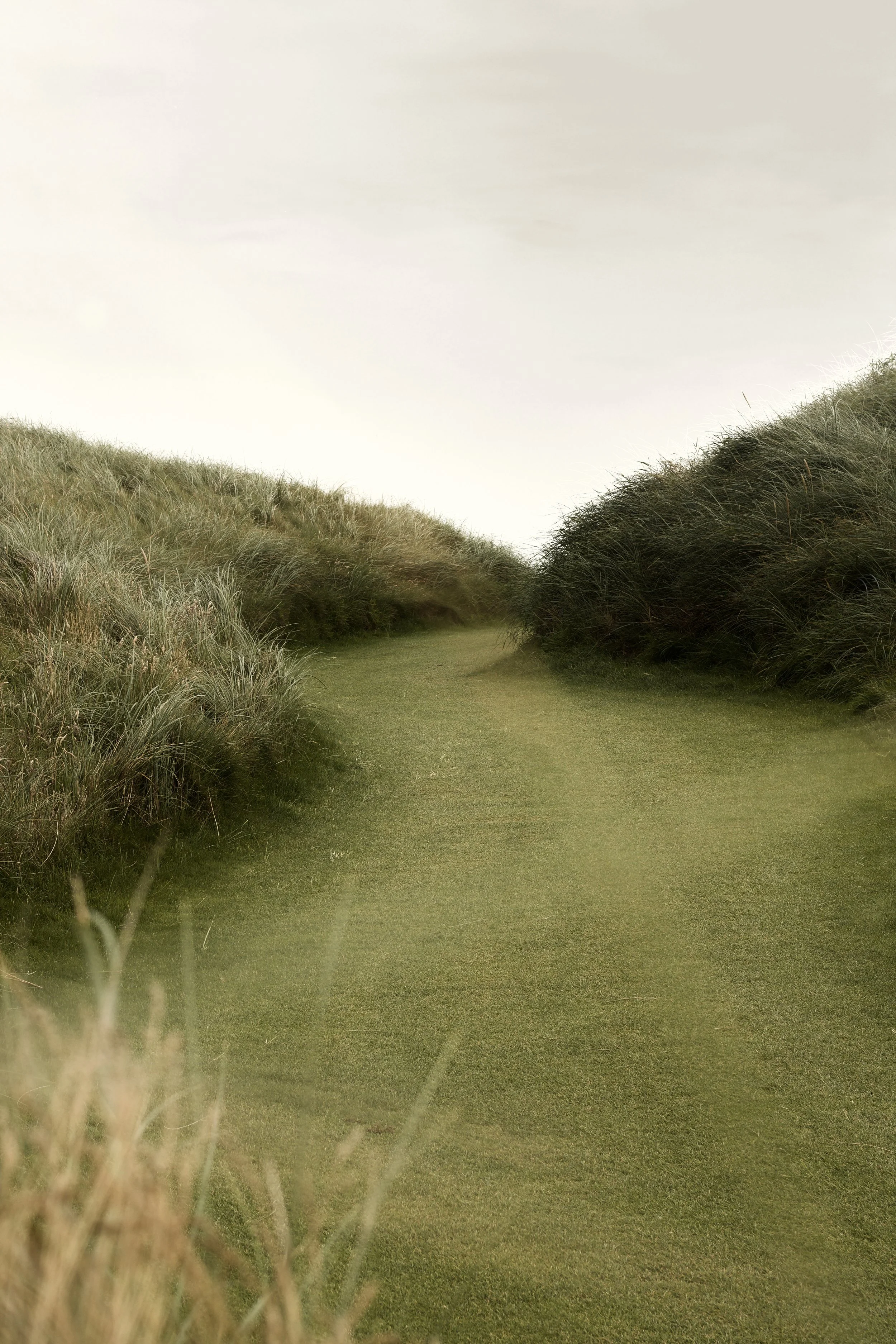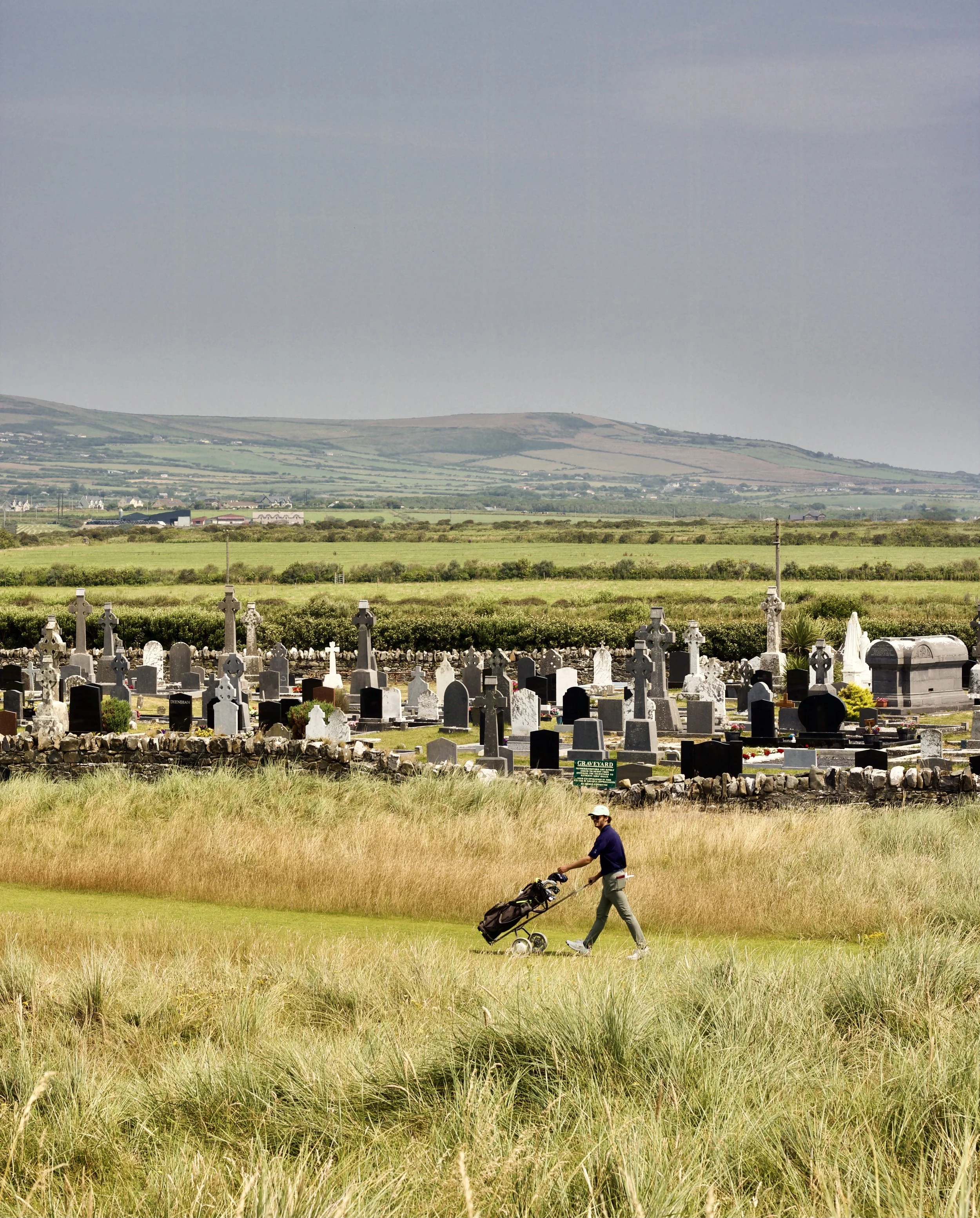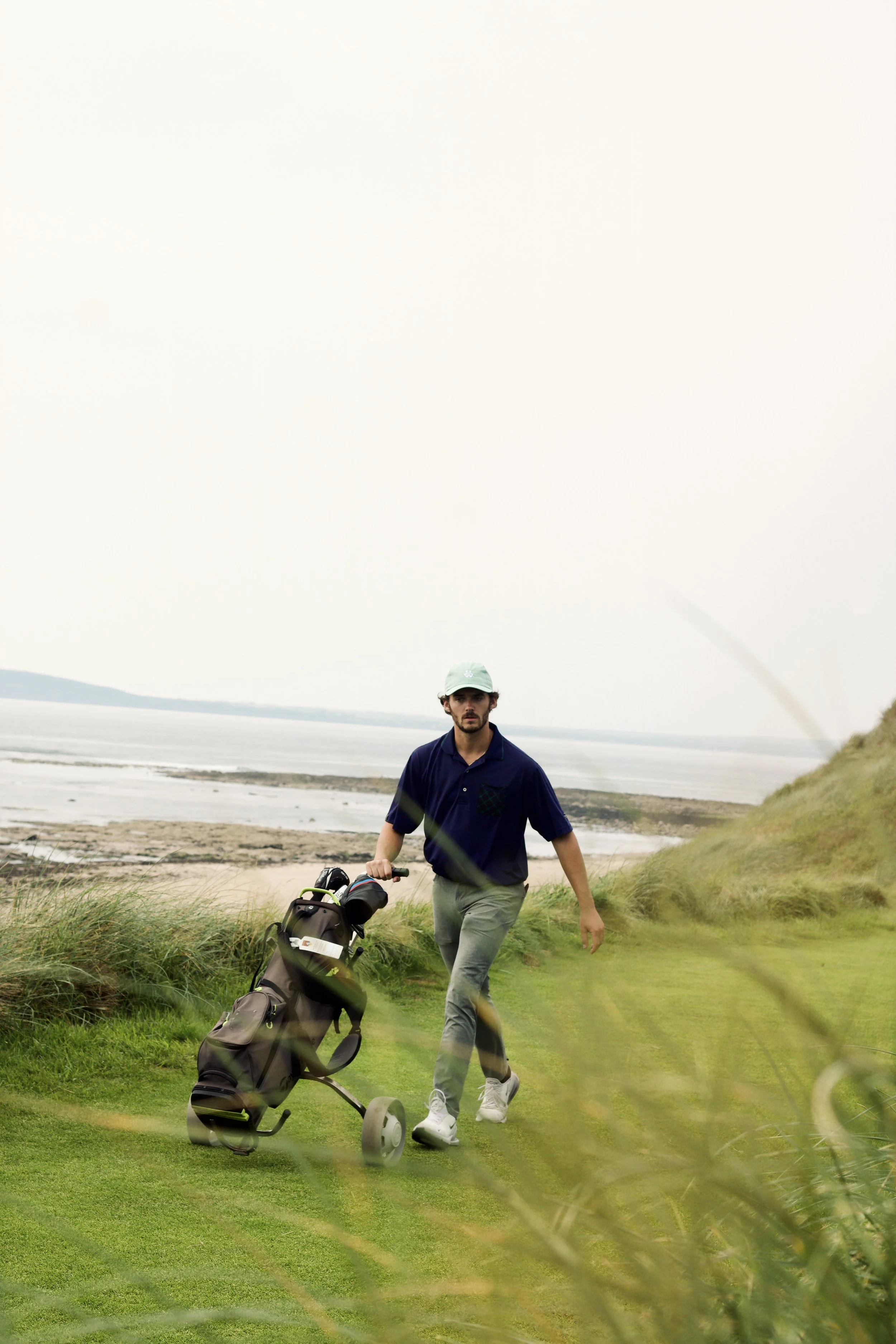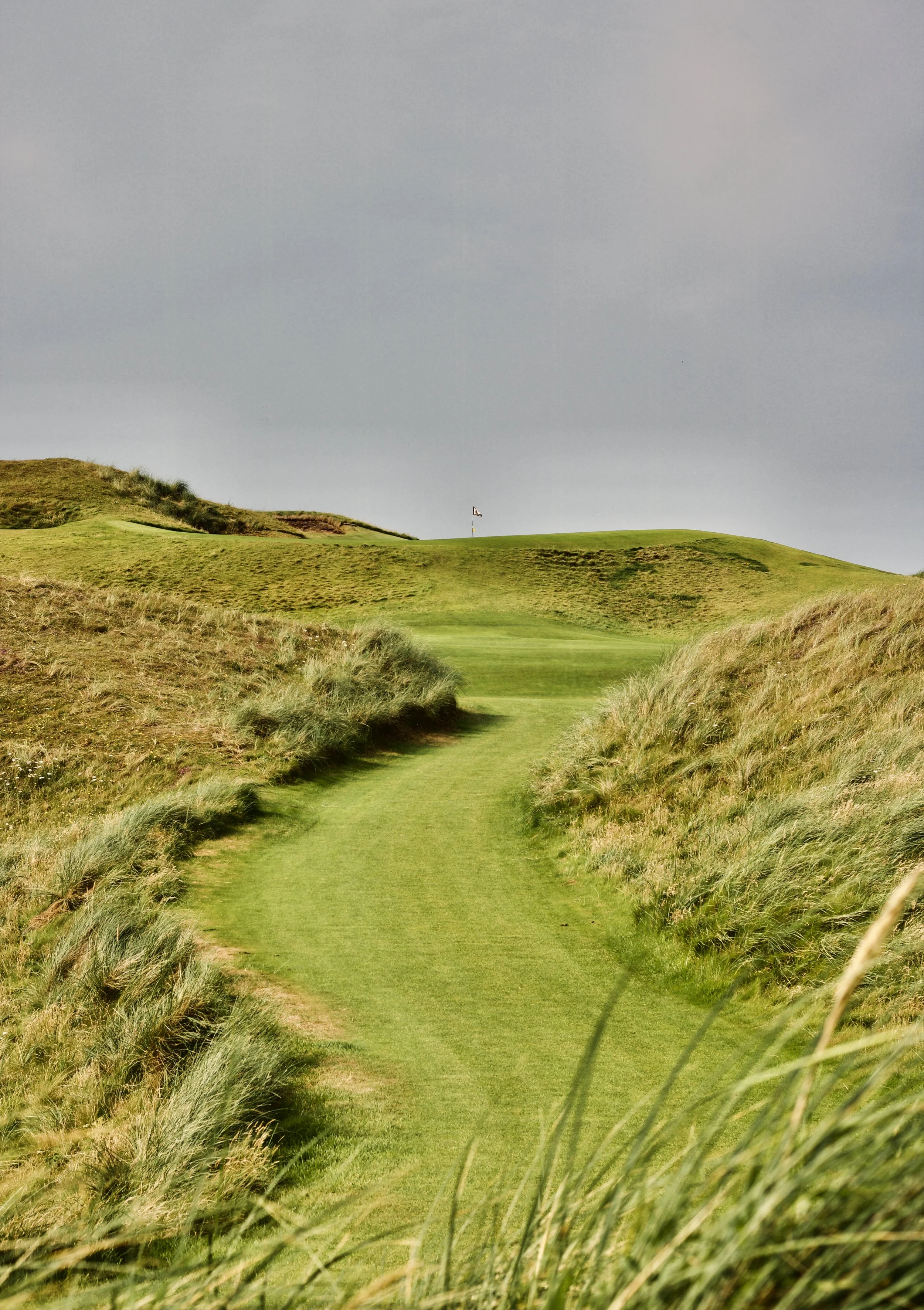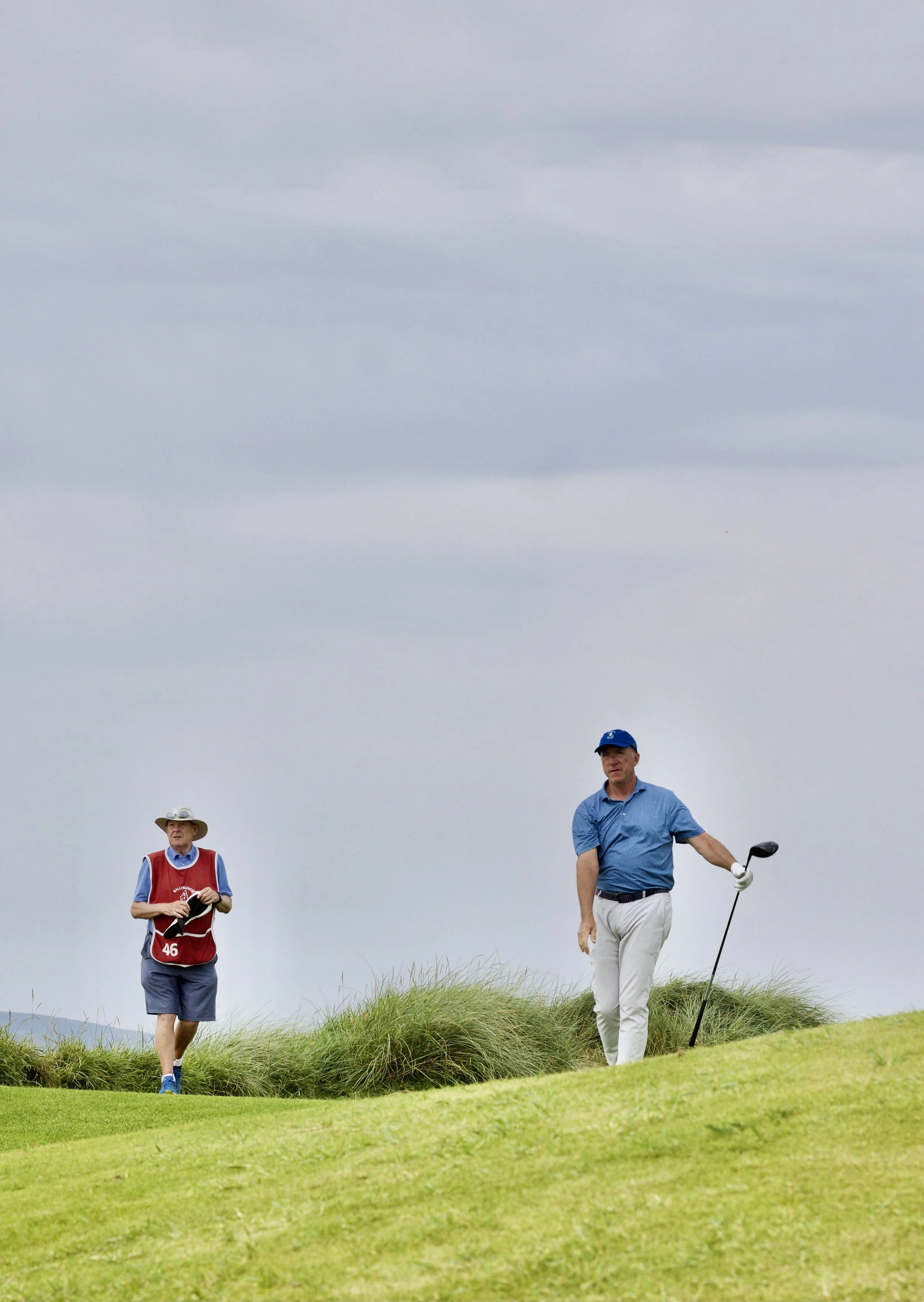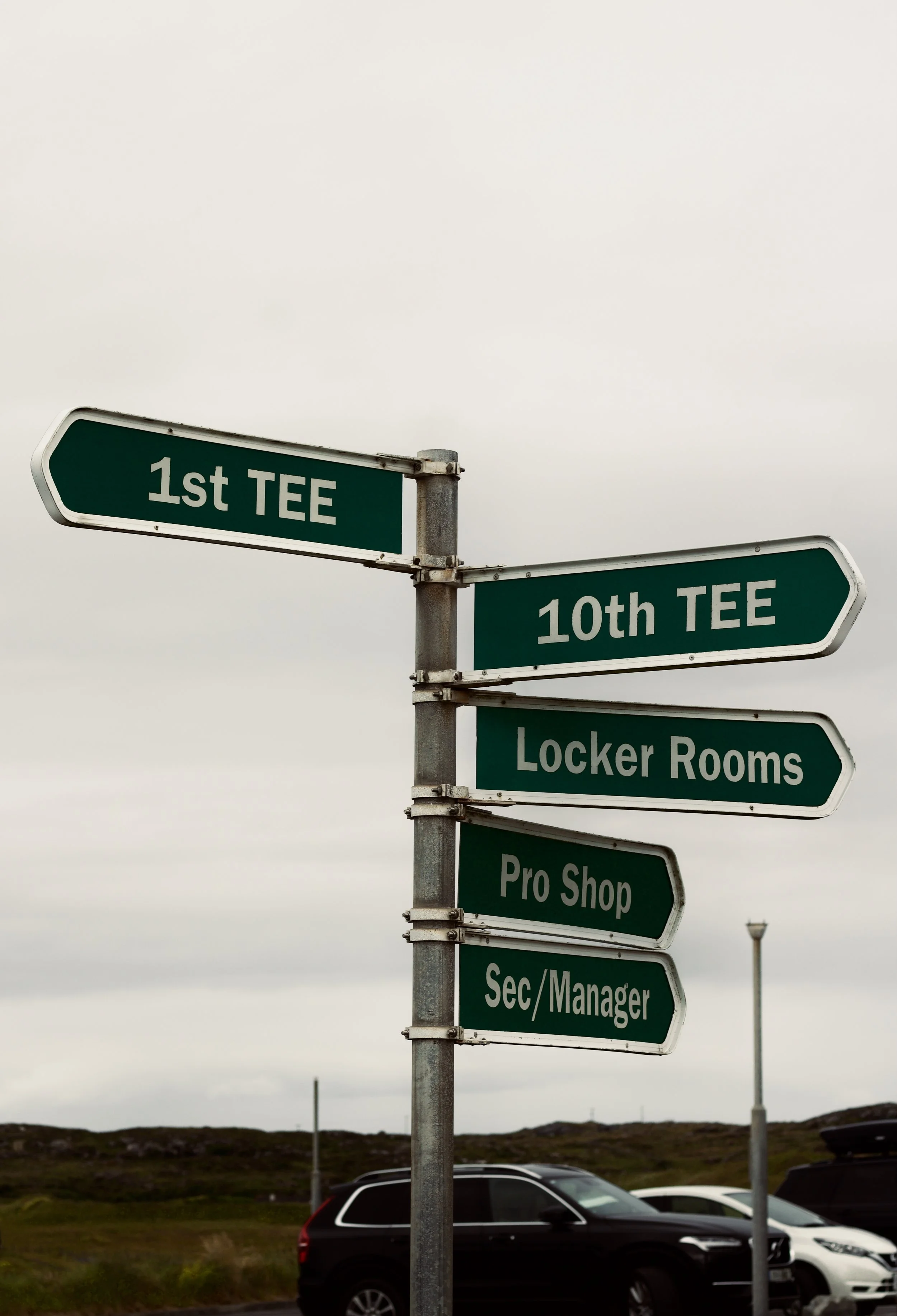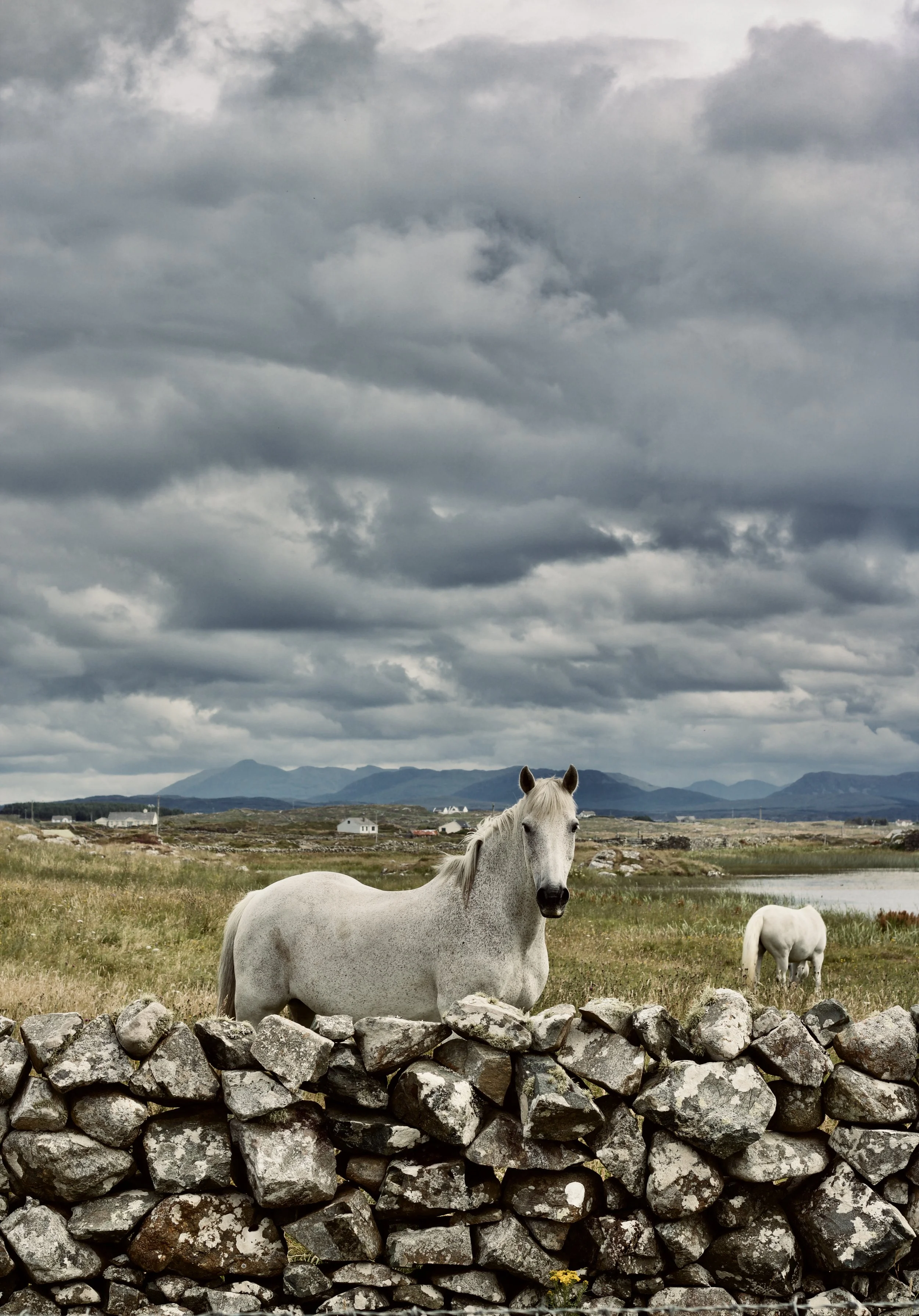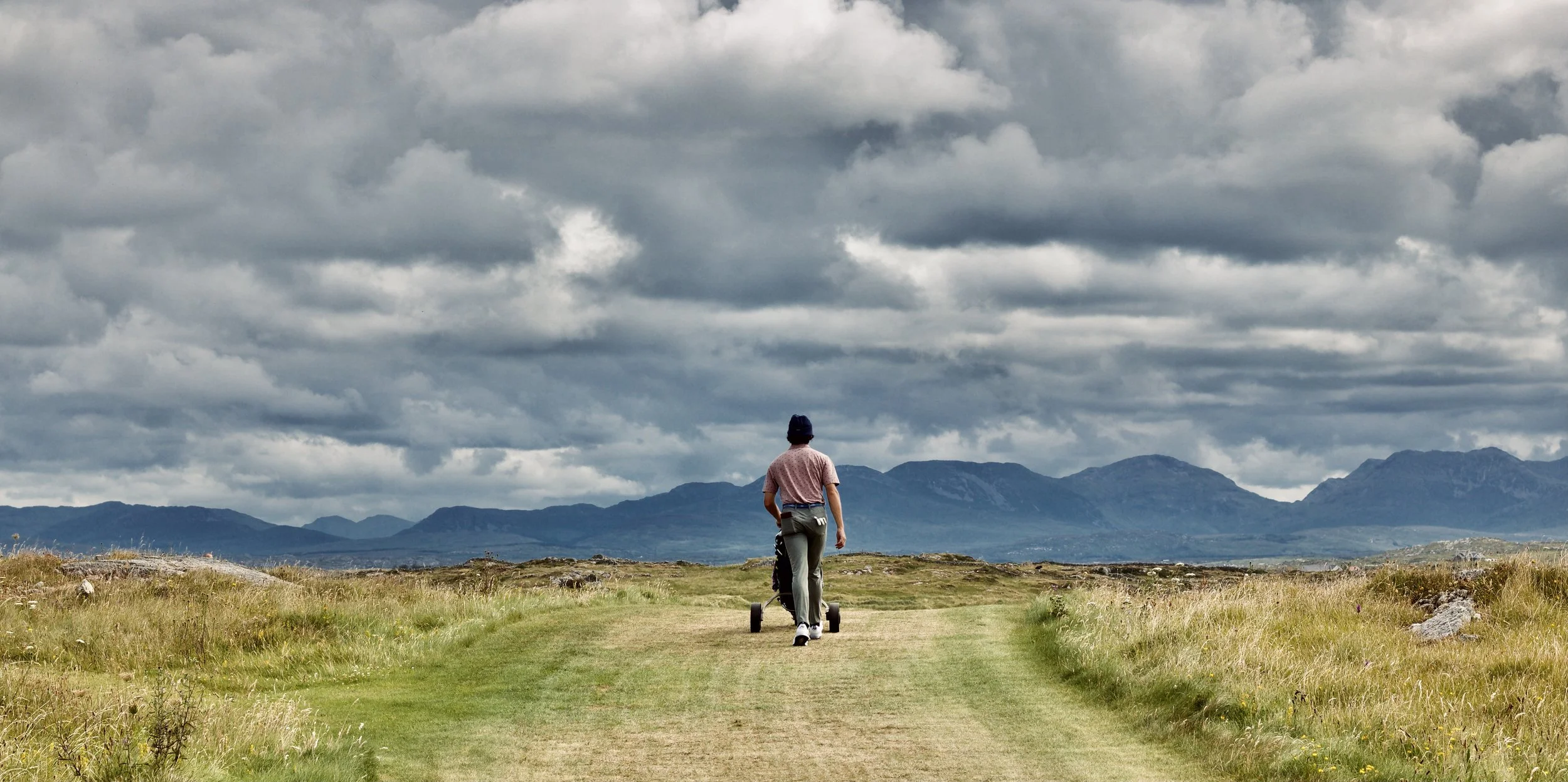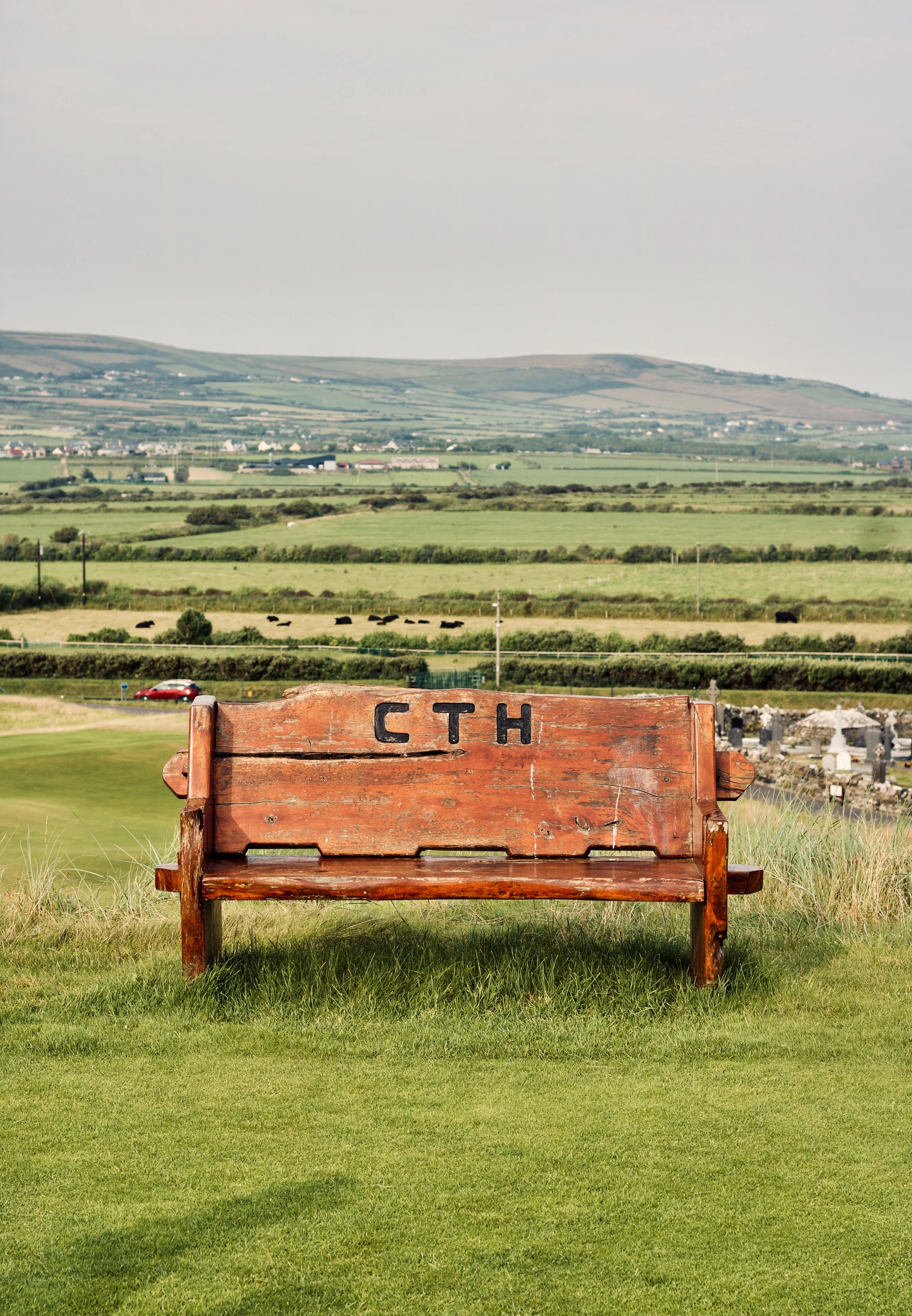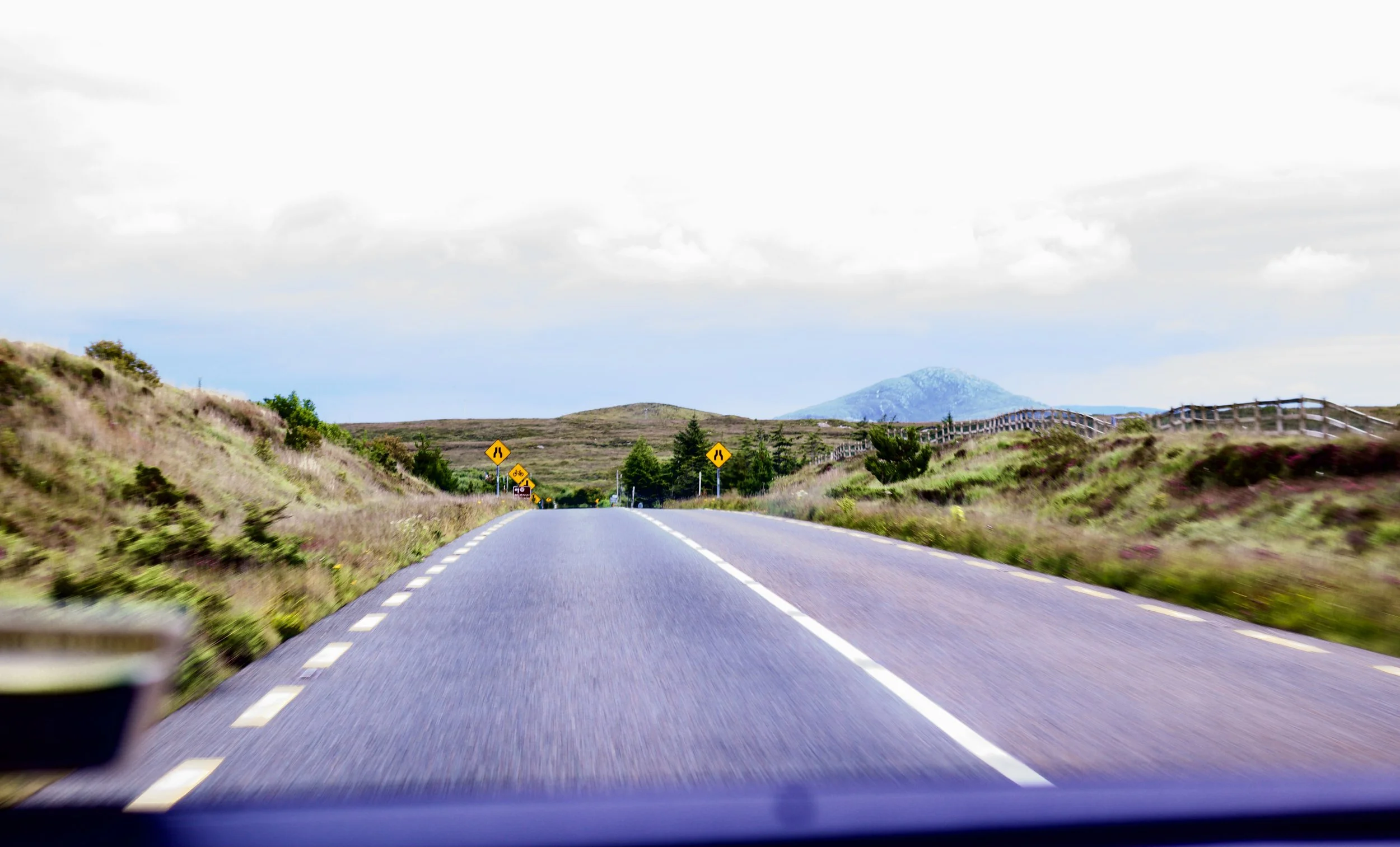Ireland: The Ongoing Search for Craic
Craic. Pronounced “kræk”. Definition: a term for news, gossip, fun, entertainment, and enjoyable conversation. Usually used in the expression “What’s the craic?”, meaning “What’s happening?” It’s the Irish slang for what Americans call “vibe” for those needing a comparison. But there really isn’t an apt comparison for craic. It’s its own thing entirely. If you don’t have the craic, find it quickly. Whether it’s coming from the pubs, the cities, the country, or the course, everyone in Ireland is on the ongoing search for craic.
I must have been seven or eight years old when I first saw the advertisement run across the 30 inch television, which back in the mid-2000s was still fairly sizable. It had footage showing big swaths of grass close to the ocean and the wind whipping flags on the end of little sticks jutting out of that grass. There was sand, and scrub, and other depictions of wild, untamed wooliness. I remember there being a melancholy sounding song being played in the background as a voice in an interestingly foreign accent said general things about “the greatest courses in the world” and “galic winds of time” or something overly dramatic like that. And yes, everything was very, very green. It was the first time I ever saw an advertisement for Irish golf. And since then, there was no doubt in my mind. I am going to play there one day.
Through a reading of the architectural classics, including Spirit of St. Andrews by Alister MacKenzie, The Links by Robert Hunter, and more recently The Anatomy of a Golf Course by Tom Doak, Scotland is not only the apparent home of golf but also home to the greatest golf. Knowing golf architecture is to know Scottish golf architecture, inside and out. Marking a course as great is to be able to first identify what has been already marked as great, which usually includes a mention of Scottish golf. Tom Doak, Gil Hanse, and almost every other architect of note has traveled to Scotland for trips specifically for the study of Scottish courses; which have been praised indefinitely upon their return. Scotland has been playing the game we know as golf (the Norwegians having possession over the precursor called “Kolven” and played, not surprisingly, on ice) longer than any other country in the world. The legitimization goes back to the eastern coast of Scotland in 1421, when the Ming Dynasty was still in existence, and even to Mary Queen of Scots giving what is now the grounds of the Old Course to the citizens of St. Andrews. Alister MacKenzie, C.B. Macdonald, and Donald Ross all studied the art of golf architecture under a man who is said to be the first, and some would even say greatest, course architect: Old Tom Morris. Where was Old Tom and the rest of the previously mentioned names from? You guessed it. Scotland.
Ireland has always been the younger brother to Scottish seniority. That is, for the most part, unanimously agreed upon. But it’s always been in the same frame of thought when describing true links, even in those classic reads. “The links of Scotland and Ireland” flow from the tongue and the pen with ease. Its history of the sport dating back to the mid-1800s, Ireland holds some of the oldest courses in the world, including The Royal Curragh Golf Club established in 1852. And on top of having some of the richest history in golf, the course raters seem to like Ireland as well. Golf Digest, the sole publication anyone pays attention to when it comes to the validity of course ratings, ranks Royal County Down Golf Club as the greatest course in the world. That title doesn’t belong to the U.S., England, or Scotland, but to Ireland. And even if you want to ignore that or maybe don’t really care about what one publication says about one course, there is no possibility of discounting the amount of Top 100 courses there are all over Ireland. Even the nominal, half-hearted golf traveler would need to be living under a rock, or more like an airtight nuclear bunker located under a rock to not consider traveling to such a hallowed place in the golfing world.
A Course Called Ireland was, excuse me, still is a big deal. Tom Coyne, the author of Paper Tiger, A Course Called Scotland, and a Course Called America, gave new meaning to the walking game when he decided to play every links course in Ireland on foot, not only walking from hole to hole, but also from course to course. Which means that he walked the entirety of the country with a backpack to carry his clothes and a lightweight, small golf bag to carry his clubs. The book exploded in popularity, and is what put Ireland on the radar for me personally, more than just an ad paid for by the Irish government. It gave legitimacy to Ireland’s stature as a bucket list destination targeted to a generation swept up with courses holding “championship style” layouts and carts holding young, attractive cart girls. Really working for one’s adventure seemed a lot more satisfying than always knowing the next step. When it came to Irish golf trips, that usually meant getting into a busload of other Americans and sipping on a double Irish coffee until arriving at the next golf club, giving a half-hearted smile and greeting to your caddie, and then being on your way. But Tom Coyne had to dodge cars, trucks and tractors while hiking on the sides of the many narrow Irish country roads. He had to deal with the weather, there being no car to sit in and wait out the rain. He had to deal with the Irish people, which even to Tom, who’s family is from Ireland, took some time to get used to such quirky brashness. “Frankly, the Irish were a little rough around the edges, they were professionally opinionated, and behind the laughter there was laughter that filled whole jukeboxes, that you could see from time to time on a park bench or at the end of the bar–big hearts, easily broken.”, he artfully portrays. But come the end of his trip, a whopping four months, 4,531 strokes, 1,967,680 yards of golf course, and 196 pubs later, the phrase “have to deal” wasn’t in the myriad of things to say about Ireland. It became the utmost pleasure.
An article from Apple News popped up on my computer about a week before my family left for Dublin. It was a worrisome article that went into detail about how the baggage system at the London-Heathrow airport was broken. The stats that were presented were alarming for us future travelers, as the so-called “baggage mountain” affected 90 flights and upwards of 15,000 travelers. In response, the airport asked 10 airlines to cancel flights for the next two days. It just so happens that the only way to get from California to Ireland, the vast majority of the time, is through London-Heathrow on an airline called Aer Lingus, which, to our apparently non-existent luck, was one of the airlines asked to cancel flights. It sounded like a gauntlet in which it was unlikely that everything would come out the other side. So even though the Lord above smiled upon us by not canceling our flight, there was no shocker when Dad didn't get his golf bag, an absolute nightmare on a golf trip. The ardent golf traveler would much rather have to stay in the clothes he traveled in than to rent clubs for a week and a half. The golf gods were testing his patience. How long is it appropriate to stay in the baggage claim area aimlessly putzing around until giving up is apparent and a missing baggage report is needed? 30 minutes? An hour or two? Through some information we gained from an Aer Lingus helpline and a sharp shoulder which was used to cut in said line, my dad got word that his golf bag was actually there in Dublin, and most probably somewhere hidden away in the bowels of the baggage claim area. Told that we were not able to go back into that area, we started to think about what we could possibly do to ease dad’s suffering. We thought of staging some sort of wild distraction for one of us to sprint in and sprint out before the security guards caught us, or yelling at random people in the baggage claim area that whoever wanted a quick $20 would find a gray golf travel bag and bring it out to us. But it was getting late, and there were only so many defeats one man can take in a day.
The first thing we did, even before checking into our hotel room located across the street from the striking St. Patrick’s Cathedral in downtown Dublin, was visit the pub. It is the only way to take one’s mind off of a loss like that. About 30 or so lanky steps from our hotel’s front door was Fallon’s, and was founded in 1619, 140 years before Arthur Guinness brewed his first batch of beer. One of many, many more to come. Second to the all-world golf we were about to play, Guinness was what stoked our inner fires. We had tasted what America had to offer when it came to a Yankees’ version of the famous stout, but we needed to see if the rumor was true, if one of the world’s most famous beers did in fact taste better in its mother land, and if the magical ambience of the famed Irish public house would change our way of looking at a good time.
I thought the Open Championship was a big deal anyplace that bordered the Atlantic. And knowing that I was going to still be in Ireland by that time, being in mid-July, I had gotten excited to watch the tournament in an environment sans an annoyingly uncultured American accent. My family had been in the town of Killarney, located in County Kerry, for the last couple of days and had taken a few walks around the block for me to scope out which pub looked like it had the best atmosphere to watch five hours of golf in. I wrote down a list of four or five on my phone with a grin of anticipation. Sunday came, Rory McIlroy was in good position to win his second Open since 2014 at Royal Liverpool, and I would surmise that no one in Ireland was excited about that potential outcome. But I didn’t necessarily care about who won, although I do enjoy watching Rory stripe balls all day. All I was looking for was an authentic experience. I wanted some random Irishman in dead last place to drain a long one and watch the pub absolutely erupt. I envisioned beer flying everywhere. Food being thrown. Anarchy.
It just so happens that there was another championship that day. Ireland has a lot of really, really good golf, but it still isn't its national sport. That title belongs to hurling. “What is hurling?” one might ask. Good question. I’m not surprised that you haven’t heard of it. Hurling is a sport of ancient Galic origin in which the objective of the game is to hit a ball, called a “sliotar” with a stick, called a “hurley” between the opponents goalposts. Above the crossbar is one point, below the crossbar is three points due to there being a goalkeeper positioned there. Great, we got that out of the way. I really don't have anything against hurling. I bet it’s a fun sport to watch. You can’t walk two steps down the street without someone bringing up hurling or the famine, which although was 175 years ago, still seems to be on everyone’s mind. But County Kerry had gotten into the All-Ireland Senior Hurling Championships, and it was apparently a huge deal. People from all over County Kerry had shown up that Sunday, decked out in their finest green and gold, the colors for County Kerry, and were ready to root their team to victory. So everyone wanted to watch it, including every pub in the entirety of Killarney. Every single TV in those four or five pubs I wrote down had the hurling match on. Hurling? Might as well be quidditch to me. So as I grew weary in my search for a TV with the Open on, I decided to pop into the first pub I saw, sit down at the bar, and ask if they could turn on the Open. Fairly reasonable question for a patron.
“Sorry kid, not gonna happen until the match is over” replied the bartender. A stern, elderly gentleman where if I ordered an Irish Car Bomb would probably have some gnarly flashbacks.
“Alright then. That’s not what I expected. That’s not what I expected at all” I murmured to myself as I responded with a head scratch and “Okay, no problem. Just a Guinness then.” Any other day of the week, or the year for that matter, I would’ve been all in on County Kerry’s hurling team, their new number one fan. Give me a jersey, a scarf, and some face paint and I’ll know the Kerry anthem by the end of the day. But the rubber met the road when I leaned over to what I assumed was a seasoned bar fly to ask him how much longer this little charade of a sport would end and getting a genuinely honest yet unequivocally Irish response like “Son, not even God knows when this’ll end.” I looked down at my phone to check my social media feed to make sure that I hadn’t missed the tournament’s entirety, and noticed that Cameron Smith was rocketing up the leaderboard. The tournament was just getting interesting, and I couldn’t conjure up the saint-like patience to wait any longer. I had to think quickly.
I called the bartender over and said “Sir, I have three more people who are on their way to watch the Open. Not hurling, the Open. Now, you know that American tourists in this town don’t have just one Guinness, we have three or four. You’re telling me that you want to waste all that business just because you won’t change one of the four TVs you have?”
“Well alright then. You’re lucky Kerry is beating the life out of Limerick.” I guess I was lucky, and thanked him profusely while helping myself to yet another Guinness. I texted my brother and said that I got a TV and an old Irishman to convert to golf. And as they showed up, something magical happened. Cam Smith was tied with Rory, and some hurley lover behind me found out about it.
“Turn on the Open! Rory’s about to lose!” shouted the man.
“Yeah I’ve already tried tha…'' came out of my mouth a little too soon, as every TV in the pub was then immediately switched to the Open. What followed became Cam Smith’s Irish fan club for about an hour and a half. Cheers and boos were focused around how the two were playing. Cam Smith hitting one of the best putts of the week on 17, the famed Road Hole, conjured a thunderous cheer and sounds of glasses clinking together in celebration. Rory McIlroy hitting any half decent shot or doing anything but vomiting all over himself as he came into the clubhouse brought a collective boo, usually followed by a comment from the bartender muttering something like “PPOS”, which I would later come to know as “Protestant Piece of Shit”. My mind didn’t have the wherewithal to deconstruct political feuds that were started before I was alive, I was just there for the golf. Finally, Cam won his first major by carding a staggering final round of 64, and all was right in Killarney. The craic had been restored.
There are only a couple places on earth that hold such sanctity for the game as Ballybunion. Tom Coyne wrote in A Course Called Ireland, “I’m not going to tell you much about the Ballybunion links. If you’ve played it, you know. If you haven’t, I’m sorry. Other places I had visited were Irish links golf courses; to me, Ballybunion was Irish links golf.” Mike Keiser was so awestruck from this place that playing here was the genesis for his idea to make a true, seaside links course in America, resulting in the creation of Bandon Dunes Golf Resort as we know it. It is rated 18th Best Course in the World from Golf Digest and still has a membership fee of €500 a year. Its accolades are prestigious. Its missionaries are numerous. But what would we think of it?
It was quite the entertaining drive from Killarney to Ballybunion. The classic, Irish country roads made my father, the driver, unseasonably nervous for someone with a private pilot’s license. This being evident from him confessing “I found out that I shouldn’t be scared of the Irish drivers but of the American ones”. It’s almost instantaneous, the transition from country to linksland, for which the road leads to. And from almost out of nowhere, the clubhouse emerges in front of us. Excitement doesn’t quite paint the full picture. There was numbness involved. It was almost too important of a moment to take in all at once. This tee time first came across my father’s inbox about two years ago when checking up with an old friend, who’s father is a member. So after keeping in contact, the opportunity arose to ask for a little favor: for his father to host us at Ballybunion. The Irish hospitality shown through as the first words in the response were “OFCOURSE”. But it was brought to a whole other level of welcoming when we saw him waiting outside the front door of the clubhouse for us with the captain of the club and the head professional, greeting us with “We’re glad you could make it” and gifting us with yardage guides stuck inside beautiful, leather yardage guide books with the Ballybunion logo stamped on their faces. We were paired up with John, a man that looked more like a bear than a human, who's been a member for the last 23 years and is on the greens committee. We knew the protocol about first tees here was a little different than back home, there being no room for a breakfast ball or anything hedonistic like that. If it’s playable then play it. But the hundred year old graveyard off of the first fairway on the Old Course was not in play, and after slicing my first tee shot of the day, I had to take a dose of humility, club down, then immediately pump another one out of bounds right on top of the first one followed by a layup from John saying “That’s death over there”. Good one, John.
The walk is amazing. One moment you’re either scaling dunes up to the 2nd green, teeing off directly over the preceding green twice in a row on the 4th and 5th holes, and then waving to the beach walkers on the 7th in the next moment. I couldn’t help but think of all the different holes I've played that are based off of this one place, and at the same time, holes at Ballybunion that looked completely individual and like nothing I’ve ever seen before. Playing the par-4 7th, I saw where Tom Doak might have gotten the idea for the par-4 4th at Pacific Dunes. Playing the par-5 16th or the famous par-4 11th was like being transported to a different planet. “If Scottish links are classical music, Irish links are rock and roll” Jack said while hiking up to the green on the par-3 12th, a shot where if one’s ball takes a sharp right turn off the clubface results in having to hit out of a pit, located next to the green, that seems like someone actually thought they could dig their way to China and gave up on day five or six. The more I thought about it, the more I realized that Jack had a valid point. “Not to be scandalous, but Scottish links, geologically speaking, want to be Irish links when they grow up. It’s a different game over here.”
There’s a bench located on the far back tee of the par-4 17th that has three letters engraved into its face, reading “CTH”. Atop the tallest dune on the Old Course, the view across the property was almost fully unobstructed. We were struck where we stood. I could see the beautiful par-3 15th, my personal favorite, shimmering in the afternoon sunlight. I could see players on the 11th tee, phones in hand, taking as many pictures and videos as their hearts desired. And as I started to look at my own hole I was about to play, it seemed almost sacrilegious to tarnish such an out of body moment with the constant clattering and clicking of my camera. I looked at John and saw a boy who was filled with giddiness, as though he was watching his soon to be wife walk down the aisle rather than a golf hole he had played countless times before. “Funny isn’t it.”, John said with a laugh.
“What’s that?” I responded with a little confusion in my voice.
“Closest To Heaven. That’s what the bench says. I just think it’s hilarious that they put it next to where people really go to heaven.”, referring again to the graveyard off the 1st, both the routing and the joke having come full circle.
We found craic everywhere we went, and had a way of making itself known in the strangest of places. Whether it be listening to a traditional Irish band in Monroe’s, one of Galway’s most famous pubs, taking a tour around the Ring of Kerry which includes absolutely striking views of the island in which the most recent Star Wars’ was filmed, or simply playing some great golf, Ireland is packed with good times for all. But what struck me was how often craic would wield its head amidst conversations with the Irish. They might be considered tough eggs to crack by some. But once they do start to crack a little bit, then their gooey insides of warmth, hospitality, and a tremendous amount of humor will overwhelm any traveler with endearment. So don’t worry, there’s plenty of craic to go around.

